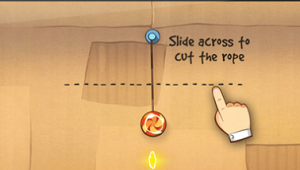Retention is a deep subject. How do you continually drive players to come back each day for a long, long time?
The easy answer, is to ensure you have the basics right:
- Your game is not buggy and doesn’t crash
- Your game is easy to understand and players know what they need to do
- You have notifications and triggers pulling your players to come back
- You have daily rewards or quests which push the player to come back each day to optimize their grind
- Your sessions aren’t too short or too long – you’ve built up a good heartbeat
- Your difficulty or pacing isn’t too “spiky” – players aren’t obviously leaving your game due to poor balancing
- Each session the player feels like they’re making progress – returning to play always feels rewarding
- You’re constantly updating the game to keep it fresh and give players more reasons to come back (and feeling like you care about the game)
However, beyond the obvious stuff, retention becomes increasingly difficult to fix, especially late in production. Here is a graph we commonly use to explain how Retention is “built up”:

source: Pocket Philosopher
Your Core Loop’s design is the base of your retention – ensuring that the Core Loop is addictive and long lasting is imperative. If you don’t have a mechanic that lasts, if you don’t have core gameplay that is fun to play — it doesn’t matter how much you add to it, the game will drop in retention. Read on here for how to create mechanics that last:
Your tutorial and onboarding can improve your early day retention dramatically. Improving your audience’s understanding and giving players some clear guidance through their first week of play can pay dividends later in your retention funnel.
Your meta will define your long-term retention. Does your game have systems that last? Does your game feel like it changes over time, or does it get repetitive? Are players always competing against the same computer opponents, or do they eventually join a social competition? Thinking about how to drive a longer term goal is imperative – it’s the main way you can push players to shift from just being casual players to being hobbyists. We’ve dived into this topic deeply when analyzing idle games:
Last but not least, high production values (amazing art, visuals) have a place in free to play – creating games that look and feel great have impact on your marketing and your early retention, but they don’t drive long term retention. Intuitively players will eventually become bored with your art and art will not be the determining factor why they come back: your underlying systems must do that.
So looking at your curve, evaluate yourself across these four metrics; Core Loop, Tutorial, Meta, and Production Value. Which area is your game weakest in?
For more on how to optimize your game’s retention, read on:





